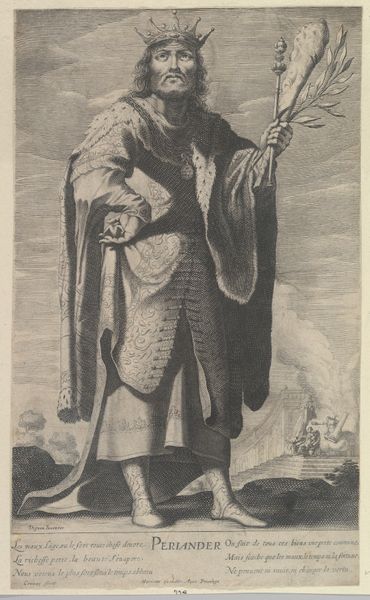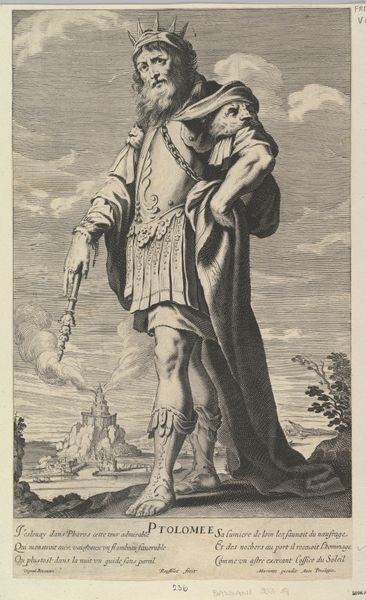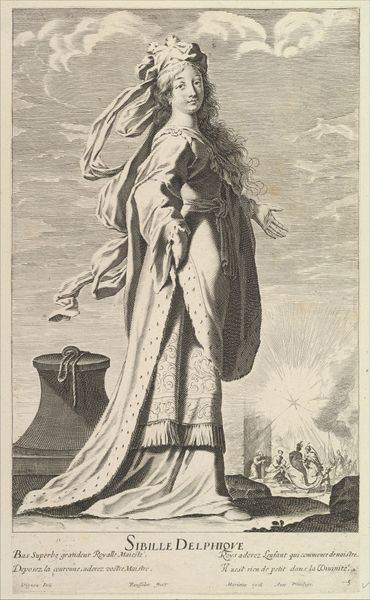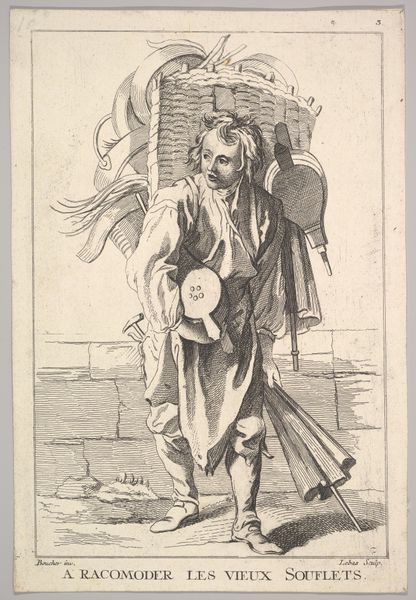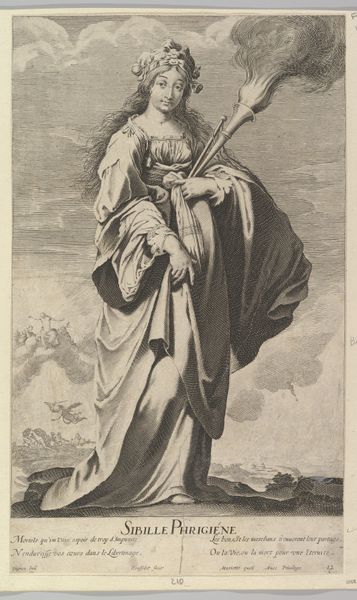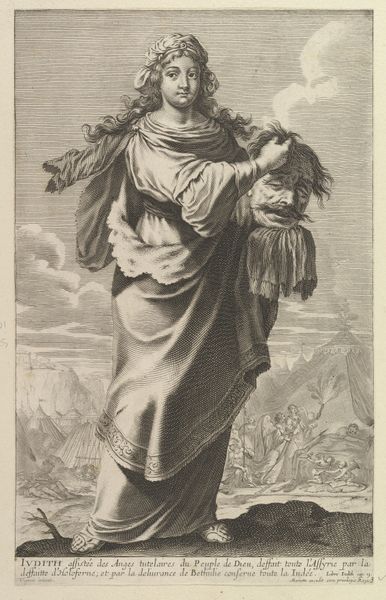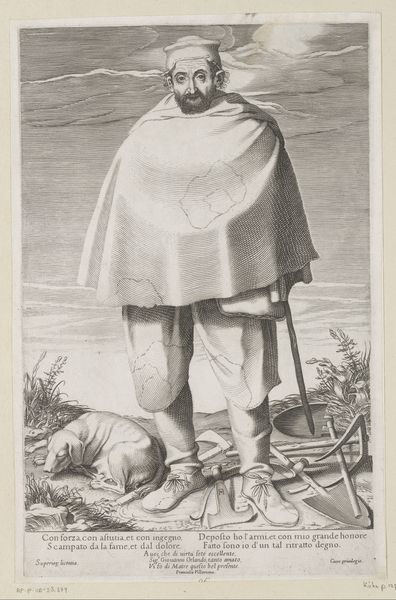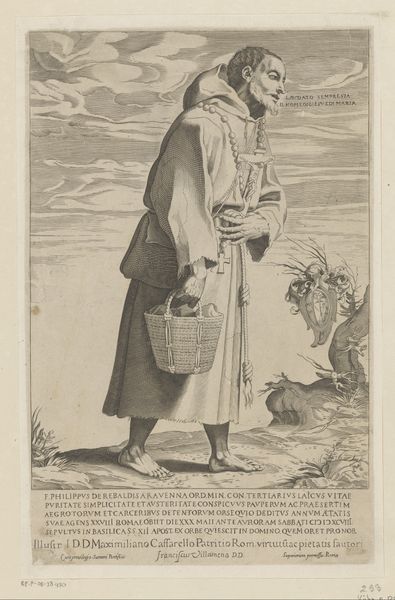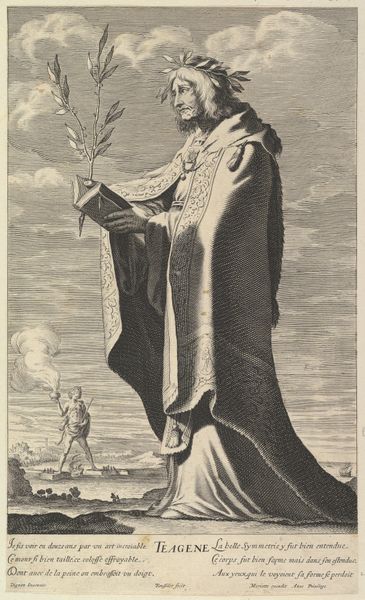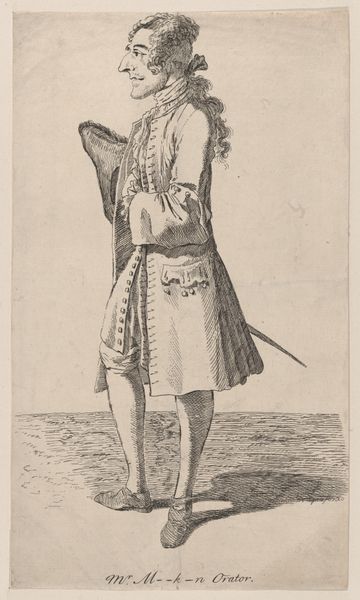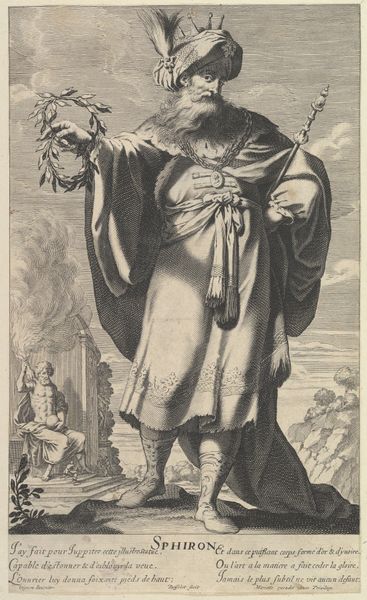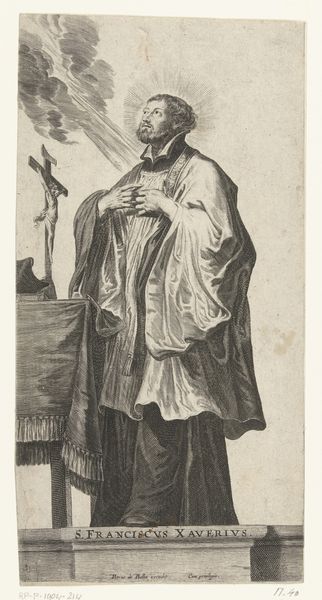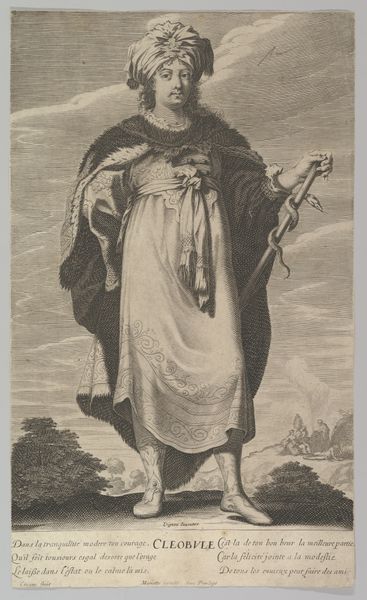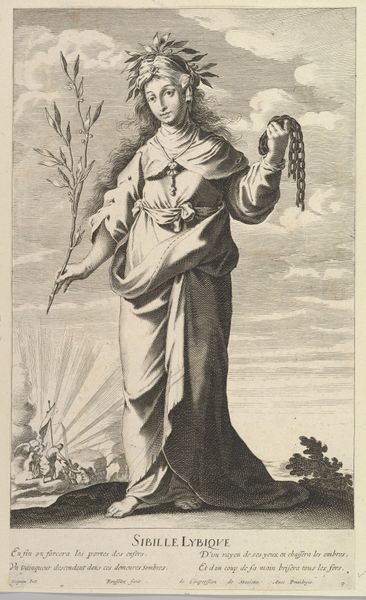
drawing, print, engraving
#
portrait
#
drawing
#
baroque
# print
#
figuration
#
engraving
Dimensions: sheet: 14 1/16 x 8 3/8 in. (35.7 x 21.2 cm)
Copyright: Public Domain
Editor: Here we have "Sibylle Samienne," an engraving by Gilles Rousselet, created sometime between 1630 and 1640. The figure's somber expression is immediately striking, given what she holds – the crown of thorns, I think? How would you interpret this piece? Curator: I'm drawn to the materiality of the print itself. Look at the lines, the pressure exerted on the plate, the social conditions that would have made a reproducible image so valuable. Consider how this image would have been circulated and consumed. What class of person could afford this artwork, and what function might it have served in their daily life? Editor: That’s an interesting point about reproducibility. Was engraving considered a high art form at the time, or more of a craft? Curator: That's the crucial question. We must resist the traditional art historical hierarchy. Engraving involved skilled labor, technical knowledge, and served a vital role in disseminating information and ideas. So it wasn't inherently "lesser" than painting; its value lay in its function within a specific material and economic context. Think about the engraver's workshop, the distribution networks – these were essential parts of the artistic ecosystem. What can we infer from the printed text beneath the image about the print's purpose or audience? Editor: It seems to describe Sibylle as favored by divinity, something about wealth. I’m guessing that relates to religious interpretations of wealth during the Baroque period. Curator: Exactly! And the act of acquiring and displaying it, suggests something about social standing and perhaps religious affiliation. By analyzing its materiality and the context of its creation, circulation, and consumption, we reveal much more than just its aesthetic value. Editor: I never considered engravings in terms of labor and dissemination, but that changes how I understand their role and relevance. Curator: That's the aim - to move beyond the isolated masterpiece and to see art as embedded within material conditions and social networks.
Comments
No comments
Be the first to comment and join the conversation on the ultimate creative platform.
